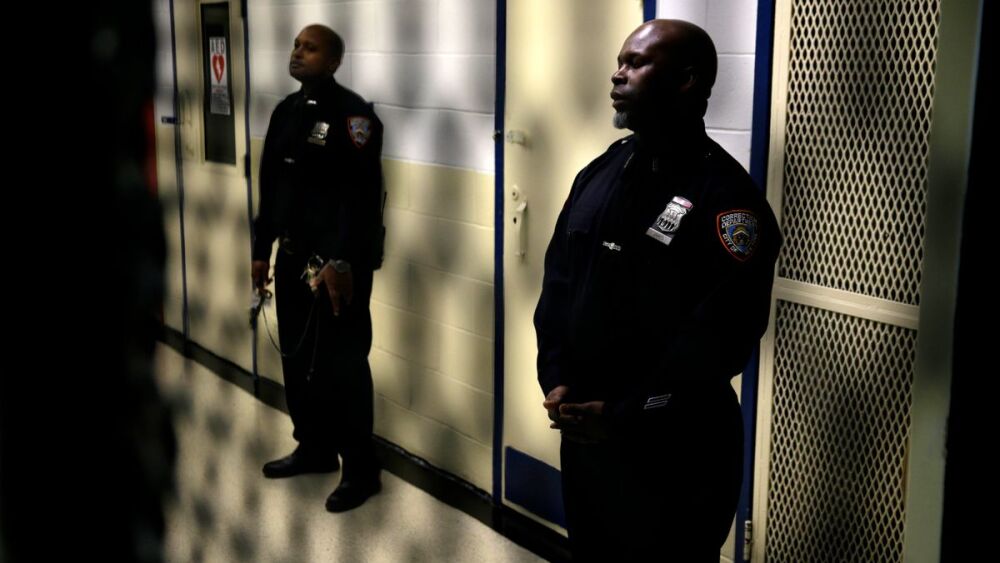Re-Entry and Recidivism
The Re-Entry and Recidivism section focuses on the challenges and strategies for helping former inmates successfully reintegrate into society while reducing the likelihood of reoffending. This directory provides articles and resources on effective re-entry programs, support services, and policies to lower recidivism rates. Understanding these concepts is vital for correctional professionals promoting rehabilitation and public safety. For more on inmate support, explore our section on Parole and Probation.
How GPS monitoring, risk assessment and interstate parole policies support safe reentry for individuals on California’s sex offender registry
The Theranos founder says her work as a reentry clerk and legal aide demonstrates rehabilitation and qualifies her for a 27-month reduction
The FIRE Act would invest $20 million annually to expand safety protections, fair wages, and job training while creating a path to record expungement and long-term firefighting careers
Some 40 prison inmates have contributed 60 original art pieces, mostly drawings and paintings, all of which are on display this month
The new law will let certain former inmates apply to have their criminal records cleared in order to get hired as firefighters at government agencies
Many agencies whose work once revolved around in-person mentoring and counseling are resorting to video calls and phone conversations
AB2147 would allow inmates, who have trained at state fire camps in prison, to have their criminal records expunged
Purdue University Polytechnic Institute professors are identifying opportunities for early intervention to help parolees integrate back into society successfully
Prosecutors and victims’ families have raised concerns about a lack of timely or sufficient notification of the release of violent offenders
More than half of the state’s inmate firefighting crews will be unavailable to fight wildfires due to the lockdowns
The sheriff’s office said it recognizes the food service industry as being receptive to employing former offenders
Three Connecticut-based groups are helping released or soon-to-be-released vets navigate the process of reinstating their benefits and resolving any VA debts
“Barracks Behind Bars II: In veteran-specific housing units, veterans help veterans help themselves” illuminates specialized housing unit programs that are trying to prevent recidivism
Reentry providers statewide said the failure of some jailers to guide those who are being released toward transitional housing could encourage recidivism
In April, Gov. Tom Wolf said up to 1,800 inmates statewide were eligible; 151 inmates were given temporary reprieve
Police said 110 Rikers Island inmates have accounted for 190 arrests since NYC began releasing inmates in March
Four former prisoners who completed the 18-month program have been hired as firefighters, per the California Department of Corrections and Rehabilitation
The state’s DOC director will now have the ability to consider early release for offenders with less than one year left to serve
Identifying and diverting ‘super-utilizers’ saves on resources, reduces jail overcrowding
The state will deploy tablets at several re-entry units in an effort to study the app’s effectiveness
In this episode of Tier Talk, Anthony Gangi has a live Q&A with “RDAP Dan”
The city and county will fund a 60-bed treatment center with case-management services for repeat offenders struggling with substance use and mental health
Using grant monies, the Vernon Police Department is connecting addicts with recovery coaches and moving them into treatment rather than jail
The pilot aims to get people with serious mental health issues out of the jail on bond and connect them with support services to ensure they return for their court appearances
Some call it a “paradigm shift”
The early Democratic front-runner’s plan aims to reduce incarceration, end the federal death penalty and expand the DOJ’s role in investigating police departments
First Step Act gives judges more sentencing discretion, eases mandatory minimum sentences and aims at reducing recidivism
The program has been suspended amid disputes over payment and charges of bullying
Proponents said that what are known as restorative justice programs can help survivors heal, while helping offenders avoid committing new crimes
The R.I.S.E. Program provides inmates with a free cosmetology education and partners with salons to help hire program graduates
Mother is suing Onondaga County, which owns the unusual shelter operated by inmates, COs and volunteers
A valid ID makes it easier for inmates to find employment after their release
Prosecutor Nicol Walgren said he was the kind of prisoner that voters envisioned when they eased the three strikes law
MOST POPULAR
- Transformational leadership: A key to success in correctional facilities
- Man makes helping ex-inmates his mission, forms national database for tattoo removal
- SC supervision program targets youthful offenders to reduce recidivism
- Fulfilling the mission of rehabilitation through training
- Overcoming housing barriers for sex offenders




















